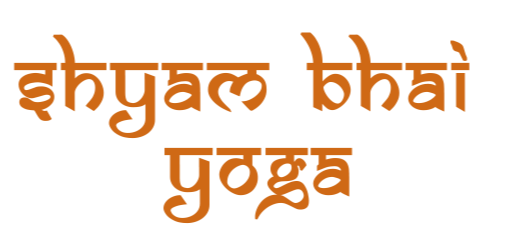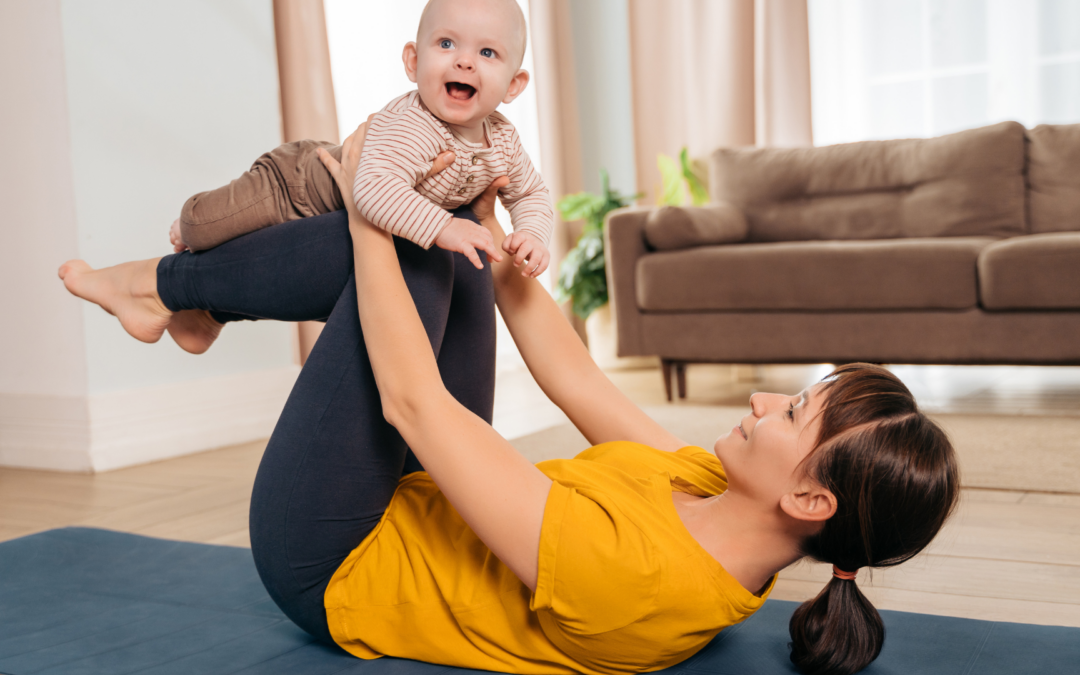Which Yoga Poses Are Safe After C-Section?
The journey of postpartum recovery after cesarean delivery presents unique challenges requiring specialized attention and care. Unlike vaginal birth, a C-section involves major abdominal surgery affecting multiple tissue layers including skin, fascia, muscle, and the uterus itself. C-section deliveries are more prevalent in urban areas (32.3%) than in rural areas (17.6%). While eager to regain strength and reconnect with their bodies, new mothers must balance recovery needs with appropriate activity progression. Yoga offers a gentle yet effective approach for C-section recovery when the right poses are selected with proper timing and modifications.
Understanding C-Section Recovery Timeline
Before exploring specific yoga poses, understanding the typical healing progression helps frame appropriate practice expectations:
First Six Weeks (Immediate Postpartum)
During this initial healing period:
- Internal incisions are actively healing
- Abdominal muscles remain significantly weakened
- Connective tissue is forming across incision sites
- Pain levels may fluctuate considerably
- Hormonal shifts affect tissue elasticity and healing rates
- Fatigue and nursing demands limit energy for physical practice
This phase requires the gentlest approach with physician approval before beginning any physical activity.
Six to Twelve Weeks
As healing progresses during this period:
- Surface incision typically closes completely
- Internal healing continues but with greater stability
- Abdominal sensitivity generally decreases
- Core weakness remains significant
- Diastasis recti (abdominal separation) may be present
- Energy levels begin gradually improving
A mindful, progressive approach becomes appropriate after medical clearance at the six-week check.
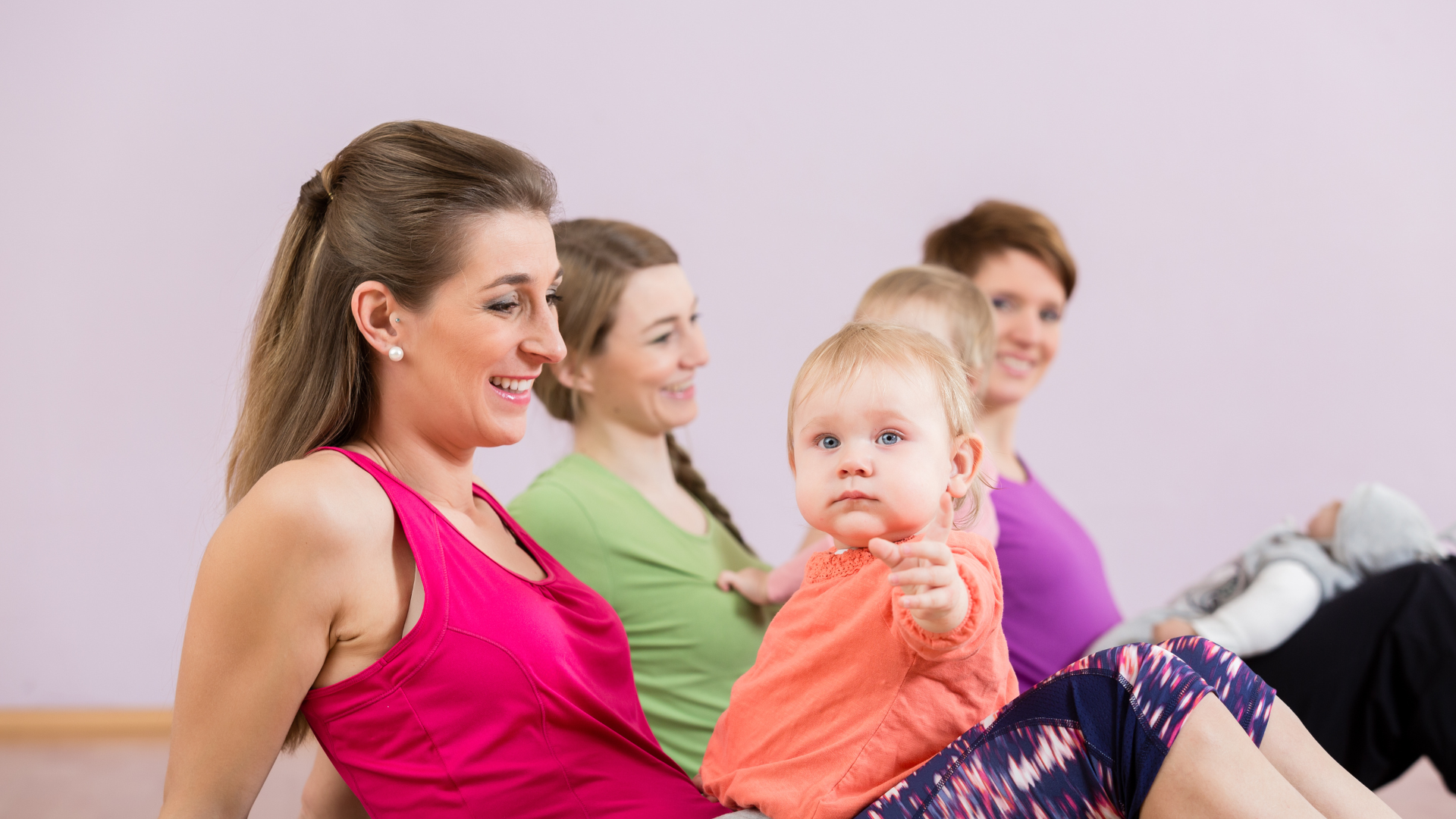
Three to Six Months
This rebuilding phase typically allows:
- More active strengthening of core muscles
- Gradual increase in practice intensity
- Attention to alignment patterns developed during pregnancy
- Focus on re-establishing mind-body connection
- Addressing postural adjustments from baby-carrying
Six Months and Beyond
While the general guideline suggests “full recovery” around six months:
- Individual healing timelines vary significantly
- Fascia continues remodeling for up to two years
- Scar tissue maturation remains ongoing
- Hormonal influences may persist, especially while breastfeeding
- Diastasis recti may require continued attention
This understanding highlights why patience and progressive adaptation remain essential throughout the first postpartum year.
Safest Yoga Poses for Early C-Section Recovery (6-12 Weeks)
With medical clearance, these gentle poses provide foundation for reconnecting with the postpartum body:
1. Supported Bridge Pose (Setu Bandhasana with Props)
This modified version safely begins reawakening core awareness:
- Lie on back with knees bent, feet hip-width apart
- Place a firm bolster or several folded blankets under sacrum (not pressing on incision)
- Allow the support to create a gentle lift without muscular effort
- Rest arms alongside body with palms up
- Remain for 1-3 minutes while breathing deeply
- Exit by removing props before rolling to side
For comprehensive wellness supporting overall postpartum health, Online Yoga Classes provide varied options that can be adapted to post-cesarean needs while addressing whole-body recovery
Benefits: Gently stimulates abdominal organs, provides mild back relief, enhances circulation without abdominal pressure.
2. Supta Baddha Konasana (Reclined Bound Angle Pose with Support)
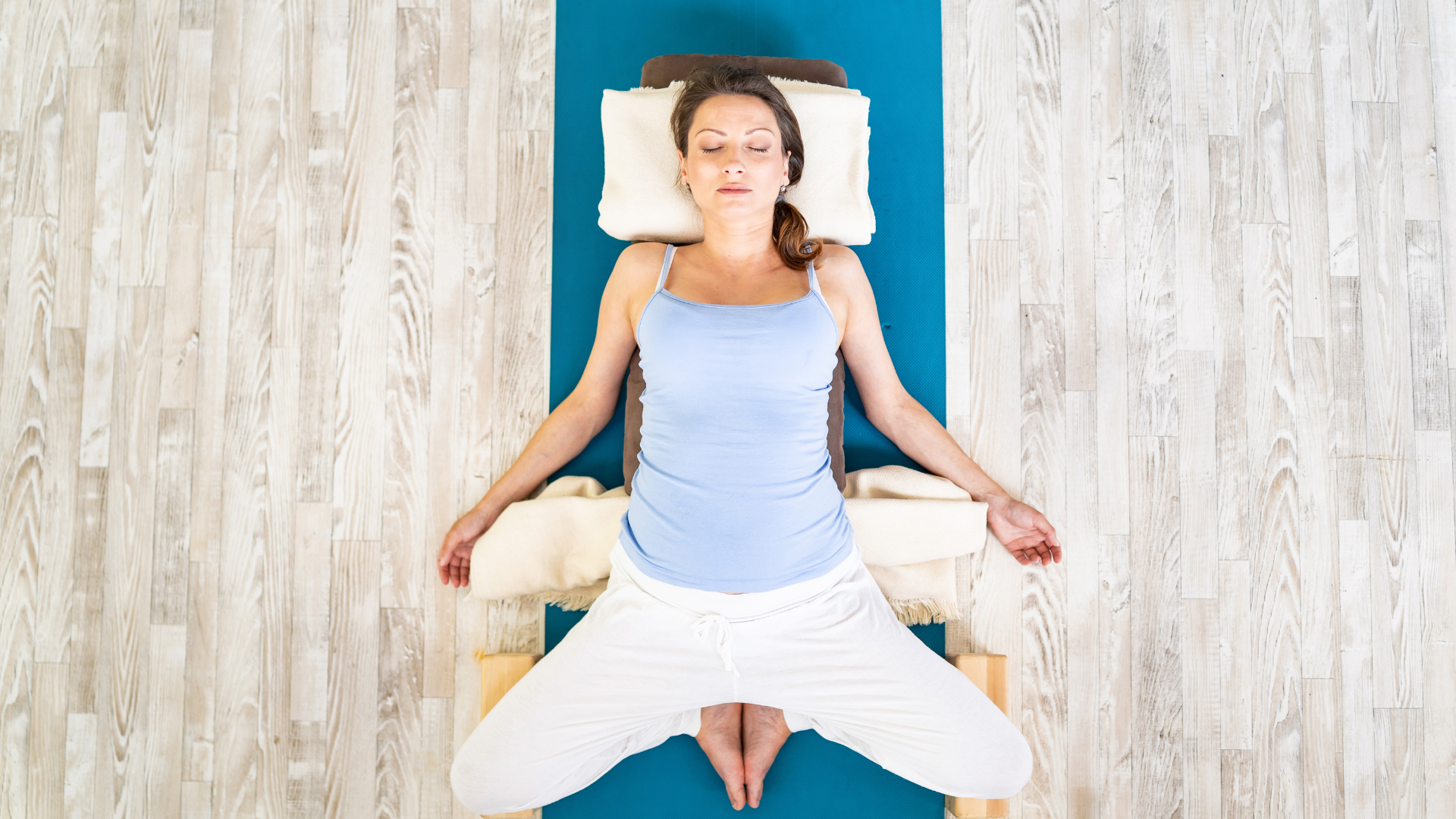
This restorative pose offers multiple benefits for new mothers:
- Recline with spine supported on a bolster or folded blankets
- Bring soles of feet together, allowing knees to fall outward
- Support outer thighs with additional blankets or blocks
- Rest arms alongside body or in a comfortable position
- Remain for 3-5 minutes with gentle breathing
Benefits: Relieves postpartum pelvic congestion, supports milk production, addresses postural effects of nursing without abdominal strain.
3. Modified Child’s Pose (Balasana with Elevation)
This adaptation prevents direct pressure on the healing abdomen:

- Place a bolster lengthwise in front of you
- Kneel with knees wide apart, big toes touching
- Drape torso over bolster with head turned to one side
- Rest arms alongside bolster or in a comfortable position
- Remain for 1-3 minutes, changing head direction halfway
- Exit by using arms to press up, avoiding abdominal engagement
Benefits: Provides gentle back relief, promotes relaxation, and begins safely reintroducing forward bending without incision pressure.
4. Supported Seated Side Bend
This simple pose begins reawakening lateral torso flexibility:
- Sit on edge of firm cushion or folded blanket
- Extend left leg, bend right knee with foot on floor
- Place right hand on floor beside hip
- Reach left arm overhead, creating gentle side bend
- Maintain length through both sides of torso
- Hold for 3-5 breaths, then repeat on opposite side
Benefits: Addresses side-body tightness from pregnancy and baby-carrying without stressing incision site.
5. Gentle Supine Knee Circles
This movement safely reintroduces mobility without strain:
- Lie on back with knees bent, feet flat
- Draw one knee toward chest, supporting with hands
- Create small, gentle circles with knee
- Gradually increase circle size as comfortable
- Complete 5-10 circles in each direction, then switch legs
Benefits: Relieves lower back tension, begins mobilizing hip joints, and introduces gentle abdominal movement without pressure.
Also Read: When Is the Ideal Time to Begin Your Postnatal Yoga Journey?
Progressing Safely (3-6 Months Post-Surgery)
As healing advances with medical clearance, these poses gradually reintroduce more active practice:
1. Modified Cat-Cow
This adaptation introduces gentle core activation:
- Begin on hands and knees in tabletop position
- Keep movement small and controlled
- Inhale to create subtle spinal extension (avoid deep backbending)
- Exhale to gently round spine
- Focus on moving from upper back rather than excessively arching lower back
- Perform 5-10 repetitions with conscious breathing
Benefits: Begins reestablishing core coordination, improves spinal mobility, and enhances breath awareness.
2. Half Sun Salutations (Modified)
This simplified sequence reintroduces standing practice:
- Begin standing in Mountain Pose (Tadasana)
- Inhale arms overhead without excessive backbending
- Exhale to hinge from hips with slightly bent knees
- Keep forward bend partial, hands on thighs
- Inhale to flat back position, hands supporting on thighs
- Exhale to fold partially forward again
- Inhale to rise with bent knees, arms coming overhead
- Exhale to return to Mountain Pose
Benefits: Introduces gentle flowing movement, begins rebuilding leg strength, and reestablishes basic yoga sequencing safely.
3. Modified Side Plank (Vasisthasana with Knee Down)
This variation begins rebuilding lateral core strength:
- Begin in tabletop position
- Extend right leg straight behind you
- Turn onto outer edge of right foot, keeping left knee down
- Raise right arm overhead or keep hand on hip
- Hold for 3-5 breaths
- Return to tabletop and repeat on opposite side
Benefits: Engages deep core stabilizers, strengthens side body, and prepares for more advanced poses while protecting healing tissues.
4. Gentle Spinal Twists (Seated or Supine)
These modified rotations introduce rotational movement:
- For seated twist: Sit on edge of cushion with tall spine
- Place opposite hand on outer thigh
- Create rotation primarily from mid-back, not forcing lower back
- Keep twist gentle and supported
- For supine twist: Lie on back with knees bent
- Allow knees to fall to one side with shoulders remaining grounded
- Use pillows under knees for support
- Keep twist gentle and comfortable
Benefits: Improves spinal mobility, aids digestion, and releases back tension without straining incision area.
5. Modified Boat Pose (Navasana with Support)
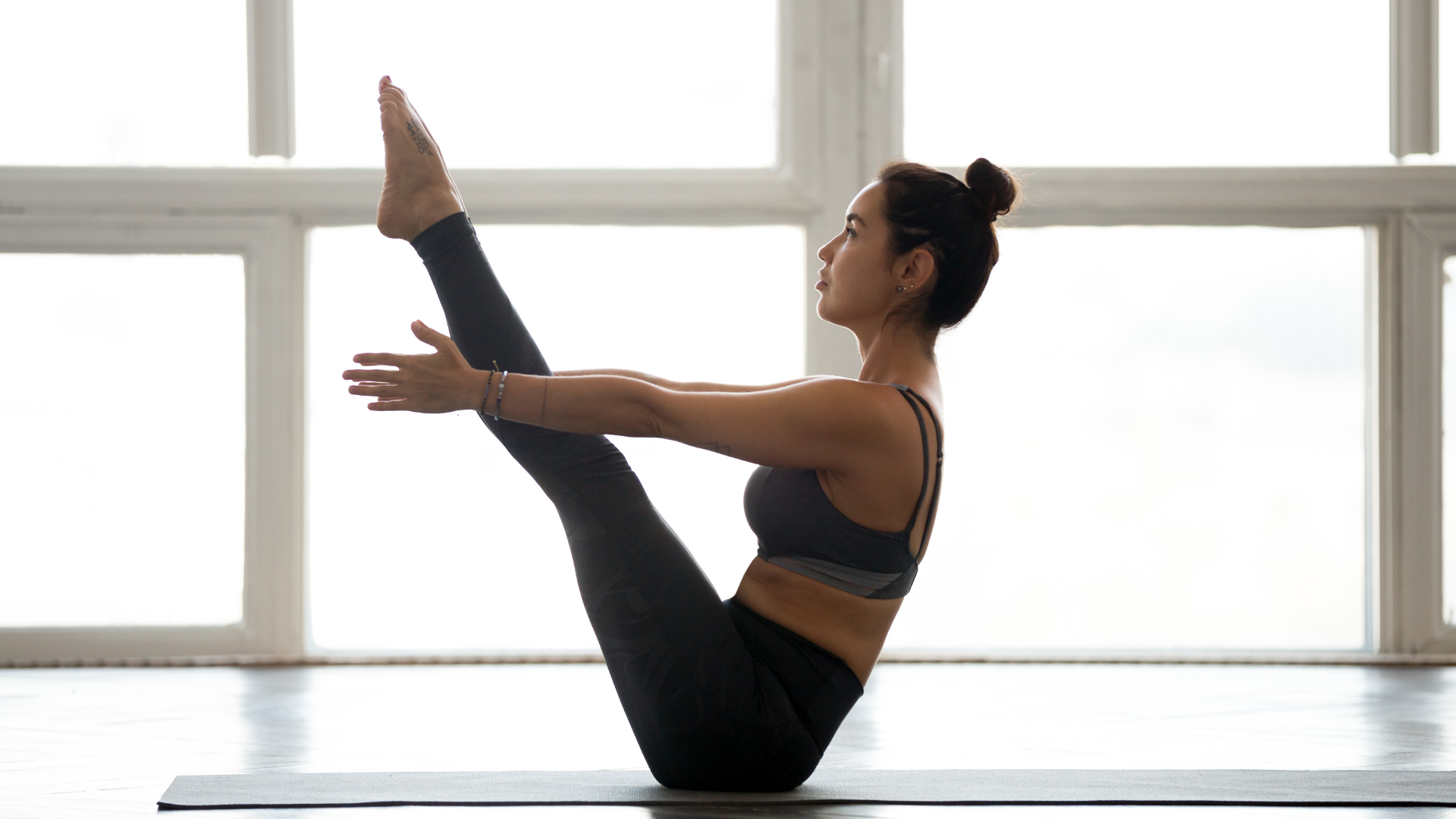
This adaptation gradually rebuilds core strength:
- Sit with knees bent, feet flat
- Hold behind thighs for support
- Recline torso slightly while maintaining length in spine
- Lift one foot slightly off floor if comfortable
- Hold for 3-5 breaths, then release
- Progress gradually to lifting both feet while supporting legs
Benefits: Begins rebuilding core strength safely, improves postural awareness, and prepares for more advanced practice.
Poses to Approach with Caution or Avoid
Even as recovery progresses, certain yoga elements warrant continued caution:
1. Traditional Core Exercises
Conventional abdominal exercises can stress healing tissues and worsen diastasis recti:
- Traditional crunches or sit-ups create excessive pressure
- Full plank position may be too demanding for healing tissues
- Leg lifts can create shearing forces at incision site
- “Boat pose” without modification excessively strains abdominals
Instead, focus on gentle core activation with proper breathing and pelvic floor coordination.
2. Deep Twists and Forward Bends
These movements can stress healing tissues:
- Deep twisting compresses abdominal organs against healing incision
- Strong forward folds create excessive abdominal pressure
- Intense stretching may affect scar formation
- Positions that compress the abdomen can be uncomfortable or harmful
Modified versions with proper support remain safer options.
3. Intense Backbends
Strong spinal extension places demands on abdominal tissues:
- Upward facing dog may excessively stretch incision area
- Wheel pose creates extreme abdominal extension
- Camel pose places significant stress on the core
- Even bridge pose without support may be too intense initially
Gentle, supported backbends provide safer alternatives during recovery.
Finding Expert Guidance for C-Section Recovery
While general guidelines provide framework, individualized guidance ensures safe, effective practice based on personal recovery progression.
Specialized Online Post Natal Yoga Classes offer structured approaches specifically designed for C-section recovery, with appropriate progressions and modifications based on healing timelines..
Beyond the Physical: Yoga’s Holistic Support for C-Section Recovery
Yoga’s benefits extend beyond physical rehabilitation to address the emotional and psychological aspects of cesarean recovery:
Breath Awareness for Healing
Conscious breathing techniques support recovery:
- Diaphragmatic breathing improves oxygenation to healing tissues
- Gentle breath awareness reconnects with abdomen without strain
- Ujjayi breathing activates the parasympathetic nervous system
- Dirga pranayama (three-part breath) gradually reintroduces abdominal breathing
- Visualization with breath enhances healing intention
Mind-Body Reconnection
Many mothers experience disconnect from their bodies after surgical birth:
- Gentle yoga practice rebuilds proprioception and body awareness
- Mindful movement helps process the birth experience
- Restorative poses provide space for emotional integration
- Present-moment awareness counters anxiety about recovery timeline
- Self-compassion practices address feelings about birth experience
Practical Support for New Motherhood
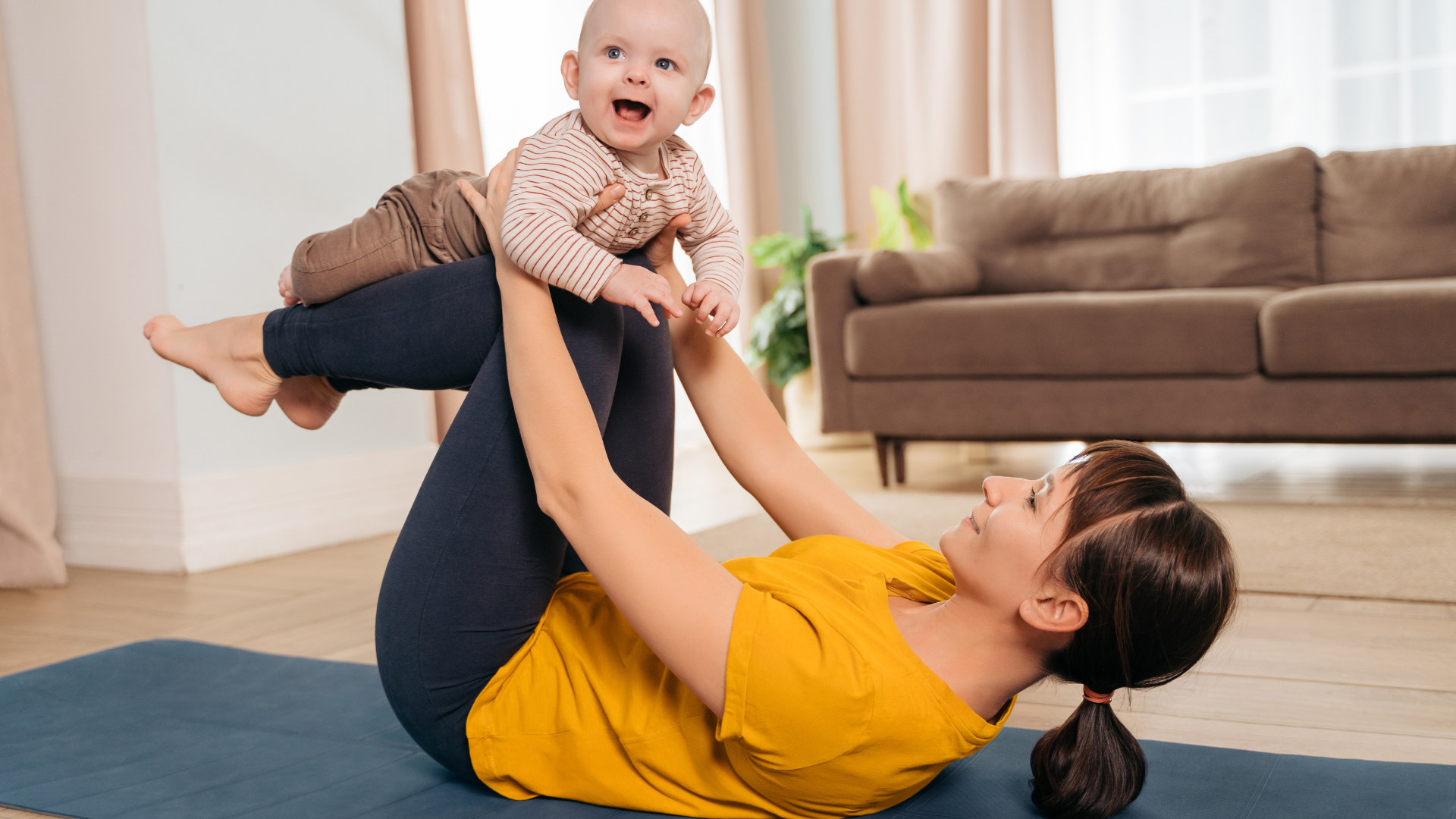
Functional yoga elements assist with daily postpartum challenges:
- Learning to move safely when getting up/down from floor with baby
- Developing body mechanics for nursing with less strain
- Building strength gradually for carrying infant and equipment
- Creating mini-practices manageable within newborn care demands
- Techniques for releasing tension accumulated during baby care
By honoring the significant healing journey following cesarean birth through appropriately modified yoga practice, new mothers can safely rebuild strength and body connection while supporting both physical recovery and emotional wellbeing during this transformative time.
Inquiry
If you have any questions, please feel free to reach out. We’ll be glad to help!
